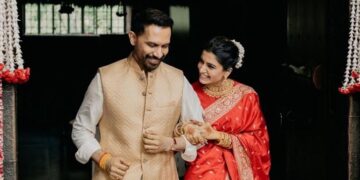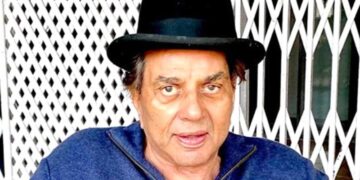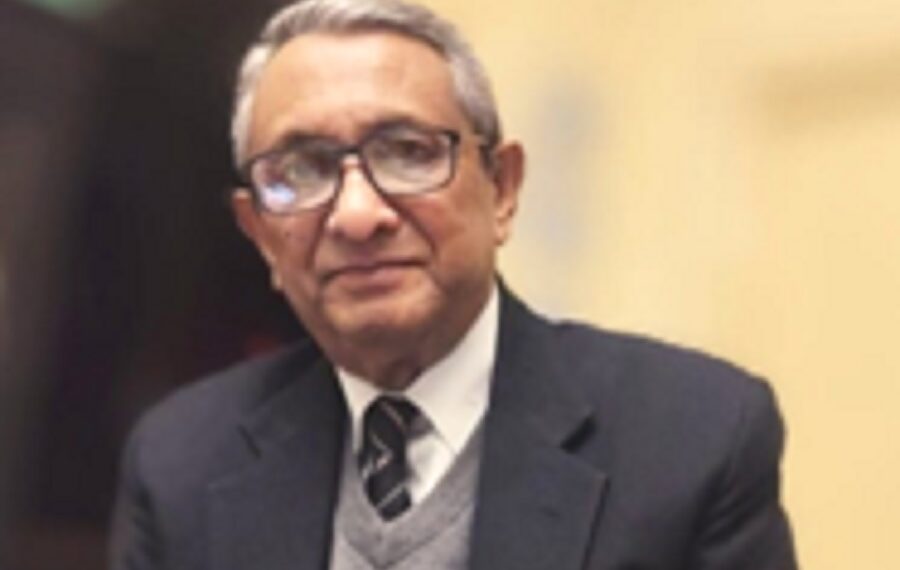Northeast News: Thank you for giving us time for this interview. Please tell us about yourself.
Prof. Imdad Hussain: I belong to a middle class Assamese family. I was born at Jorhat in my maternal grandfather’s huge 300 plus estate at Lichubari in Na Ali.I never saw my grandfather,he died before I was born, just months before he was to take over as Assam’s Director of Agriculture in 1941. My paternal grandfather was a man of letters, a post master in one of what was then called a moffusil town of Assam. He too died early, when my father was only two years old.
I am the youngest of my father’s four sons. I have two sisters, one older and the other a few years younger.
I did my schooling at Shillong, in St Edmund’s where I read from lower KG to Senior Cambridge. I graduated with Honours in History from the Gauhati University and thereafter did my Masters in Modern History. Professor H.K. Barpujari, the head of the department of History, handpicked me to do research under him and offered me a University fellowship. My PhD thesis “Problem of defence: North east frontier, 1822-66” was the first doctoral thesis on military history in India. The work has since been developed and will be published in two volumes. But this may take another two years. After two years as a research scholar in the department I joined the Assam Education Service II in late 1971. I was posted to the Government College in Aizawl where I later became Head of the department of history. My services were transferred to the government of Mizoram after the state was created in 1972 and I remained in Aizawl till 1975 when I joined the newly established North Eastern Hill University as assistant professor of History.
As one of the first members of the history department I was fully involved in organising courses for teaching and research. PhD and MPhil programmes were gradually introduced. It may be of interest to you to know that one of my first acts in the University was to invite Major Bob Khathing to deliver a lecture on his work in Tawang. Tasked by a committee of the UGC to consider the Himalayan region as an area of study appropriate for our University I introduced courses on Nepal, Sikkim and Bhutan and followed this by one on Tibet, the first and perhaps the only university in the country to do so. Burma was also included. Studies on the north eastern frontiers, its tribal people etc. and of the neighbouring countries became under my direction an important part of the department’s research programme. My own researches and most of the PhD and MPhil dissertations I supervised were on these areas.
In addition to my academic responsibilities I held a number of administrative positions in the University including those statutory. While still associate professor I was appointed Dean of Students and shortly afterwards two more posts were placed under me, namely Coordinator of the Government of India’s National Service Scheme, the NSS, and Director of Sports of NEHU. As Dean I organised student services, helped in planning out the halls of residence, the sports and recreational centres in the proposed permanent campus. I extended the NSS to our campuses at Kohima and Aizawl (before the two states had their own universities) by appointing deputy coordinators at each from among the teachers. I extended the same policy to develop sports in the campuses by obtaining sanction for the creation of assistant directors of sports and appointing to these posts qualified local candidates.
In 1987, I was deputed to attend a course on Management of Educational Systems at the Administrative Staff College at Hyderabad. I am Life Member of the College). Thereafter, I took over as Head of the department of History. At the end of my second term as Head I was appointed Director of Publications, a post that I held for five years. In that capacity I oversaw the University’s text book production, vetted and printed research publications, prepared and printed the Annual Report, which is submitted to Parliament, and the Journal of Social Sciences of which I was also the Editor. As Dean of the School of Social Sciences, I oversaw the shifting of the various departments of the School and their organisation in the permanent campus. The responsibility of preparing the University’s 10th Plan proposals fell on me as the senior most Dean. Concurrently I was the Regional Director of the ICSSR, itself quite a burden. This long experience in academic administration including two short periods when I acted as Vice Chancellor, was very satisfying but it took a toll on my research and publications.
What about your work in the BJP. When did you join the party and what has been your experience?
I joined the party in early 1999 and have been an active member and a member of the State Executive since 2000. I was much influenced in this by the great Vajpayeeji, and have always regarded him as India’s finest Prime Minister. My twenty four years in the party has been a wonderful experience. I have been in its various committees and chaired many of them and was Vice President for two continuous terms till December 2014. I wrote the party manifesto for the parliamentary elections in 2014 (in the absence of a national party manifesto) and the party’s Vision 2020 for the state of Meghalaya.
The ten years between 2004 and 2014 were however the most challenging. After we lost power in Delhi many of our workers began to leave the party. Some joined the Congress including one of the founders of party who carried with a large section of our old karyakartas. Matters became so discouraging that it was difficult to find workers and suitable candidates for the assembly and parliamentary elections. Names for the crucial post of party president were also not forthcoming and this fact I brought to the notice of Shri Ramlalji when he visited Guwahati. There was a feeling among many that we should opt out of 2014 parliamentary elections as a waste of money and time. We felt that this was not the correct attitude, for if we had no candidates, whether we won or not, our workers would vote for some party and we might never return. If that happened it would be exceedingly difficult to rebuild the party. I argued our case before our national president Shri Rajnathji at the party conclave held in Guwahati in 2013. Shri Rajnathji was sympathetic, so were others at our special sitting, Shri Ramlalji, Shri B P Acharyaji and Shri Kirrenji. Approval and funds however came too late and our candidate had only thirteen effective days for canvassing, In spite of that our performance even though we lost was commendable. We had no candidate for the Tura parliamentary seat as there was a tie up, in Delhi, with Shri Purna Sangma and we were directed to field none.
The situation has of course changed for the better after 2014. Many of those who had left the party have returned. Nevertheless this experience has confirmed me in my conviction that every effort has to be made to develop the party organically, bringing in young leaders imbued with the party’s ideas and ideals if we are to make any impact on state politics. We ought not to depend solely in bringing in dissidents from other parties, however useful that might be for electoral purposes, or fly-by-night political aspirants.
You are perhaps among the foremost historians of North East India. How would you characterise the present times in relation to the ones that you were heir to as a child.
Our times were certainly different. We grew up in free India. But in the early years the functioning of government and the attitude of the people had remained colonial in thinking and in practice. The books we read in school, literature and history, which was British history, had their colonial bias. The school had all the trappings of an English public institution. The Irish Brothers who managed the school were always sympathetic to India’s cause and often likened our national leaders to their own De Valera. Indeed not many know that in 1937 the principal had Netaji Subhas Bose over to the college to lecture to the students at a time when no one in Shillong dared to be seen with the great leader. It was in college that we read books by Indian authors and understood the true nature of colonialism and the long struggle for the country’s freedom. Yet more important we learnt in school such values as patriotism, integrity, gratitude and ethical principles. The motto of our House was “Act Manfully “ and we tried to live up to it. It is in the erosion of much of these values in today’s youth and in the country’s public life that I see the change from our time.
The other major influence on my life was my father. From early on the importance of moral courage had been inculcated into me, such as admitting mistakes and not attempting to hide them or finding scapegoats. Another was about taking decisions when convinced of its necessity even if this meant violating rules and conventions. He lived up to his conviction when in 1948 as the first Director of the State Transport he ordered construction of quarters for his staff without government’s sanction. “Are my staff to live under the stars”, he replied when questioned about his action. I too took important decisions while in the University on my own authority without getting into any difficulty. One piece of advice which is of particular relevance today is that it is the bounden duty of an officer to protect the good name of his predecessor. There was much else that I learnt from my father. I had accompanied him in many of his tours of inspection as Deputy Inspector General of Police and later when he was Inspector General (between 1957-62). And I came to realise how important inspections generally were to efficient administration. I followed this wherever I could when I held various administrative positions in the University. In fact, my early experiences of events and persons have been very useful to me in my later life.
Do you feel that the manner in which Nagaland, Meghalaya and Mizoram was carved out of Assam was scientific. Also why do issues pertaining to inter-state borders continue to fester.
I am not quite sure if the term “scientific “is really applicable in the creation of these states. To the British in India a scientific frontier meant one that satisfied strategic, ethnic or political considerations. It was impossible to find such a perfect frontier and so in colonial frontiers the strategic factor dominated. In the context of internal boundaries language was a determining factor for the Congress .After independence this notion found expression in the creation of new or reorganisation of existing states. That this principle was irrelevant or inapplicable to the old composite Assam is borne out by subsequent events. The language issue does not seem to have been the only or primary reason for the movement for a separate hill state or states. It seemed that it was loss of their tribal identity the people feared most if they were placed under the generic category Assamese. The language question was only apart, even if a vital one, of that apprehension. The hill state movement in Shillong was beginning to lose steam by the close of the sixties when the introduction in the Assam assembly of the state language bill in 1960 rejuvenated it to fruition. Perhaps you may be right in suggesting that the creation of those states was not on scientific lines.
That their creation was hurried and not well planned probably accounts for the boundary disputes they all have with Assam. These boundaries were drawn without any reference to history and ground realities but rather on expediency. These disputes cannot be settled today by mere visits to the disputed areas by officials and the political leadership. First the principles on which these boundaries are to be drawn or redrawn should agreed upon between the states concerned and she inter se priorities to the set of agreed principles settled before border conferences began. The evidence that each state puts forward should be examined within these principles. Unless this is done every conference will degenerate into squabbles, each disputant trying to foist upon the other evidence they would consider final and clinching.
Nagaland has boundary disputes with Assam and this tends to become complicated as a result of the ongoing insurgency. What is your view on New Delhi’s talks with the Muivah faction of the NSCN.Is this in the right direction?
I am against such talks though not against the principle of dialogue with dissident groups to bring them to the table. A general amnesty to insurgents if they are not involved in any punishable crime is quite different from treatment of its leaders responsible for the act of insurgency and the violence resorted to to obtain objectives. Pardon to these leaders has no legal basis unless the crime for which they are pardoned is not established in a court of law. To put it briefly surrender or capture of insurgent leaders must be followed by the judicial process before the political process can begin. This is overlooked in most cases in the North East situation.
In Nagaland there has been a trend to bypass the state government in dealing with insurgency. Former governor B K Nehru relates in his Memoirs how the chief minister, T N Angami, bitterly complained to him that New Delhi did not even regard him as the head of the government where this issue was involved. When Kughato Sukhai goes to Delhi for talks he is received at the airport by the foreign minister who escorts him to Hyderabad House as a State Guest. And that while he always had difficulty in obtaining an audience with the prime minister Kughato could set the day and time for his meetings and Indira Gandhi would acquiesce. I find it rather curious that the demand for a separate flag for Nagaland which is one of the issues stalling the talks should come not from a government democratically elected but from a rebel group. These are of course my personal views and ought not to be taken as being critical of New Delhi’s efforts to bring peace and development to the state and its people.
Certain observers have been stating that Assam’s population is soon going to be overrun by illegal immigrants from Bangladesh. What is your observation on the matter?
No, I am not that pessimistic. But there is definitely a danger that large swathes of Assam’s rural areas may come under possession of illegal migrants if the people and the government are not alert. We are still in the dark about the number and location of illegal settlements in the Brahmaputra and Barak valleys. The exercise carried out in preparing the NRC seems to have created more problems than it had solved. Most writers on the subject have drawn upon government and non-government sources or have written on the basis of their observations in urban settings. Very few of them have actually visited the rural or interior areas where the problem mainly lies. I had occasion to see a remote village beyond Barpeta which from all appearances looked more like a village in Bangladesh than one in Assam. That was in 1986 and I shudder to think what the situation might be today. I am not quite sure if the thanas and police outposts in such areas have been sufficiently sensitised about the problem or that officers in charge of these police stations have been recording facts and going-ons within their jurisdiction as required by the police manuals.
There are however many districts in central and upper Assam that are relatively free from large scale settlements of immigrants. These districts and their subdivisions should definitely be protected from any future encroachments before it is too late. Whether this is to be by legislation or by executive action is for the government to decide.
There has been some thought ( in informed circles )that Assam should be declared a “ Tribal State” a status that could well save it from the invasive designs of the Islamist. What are thoughts on the issue?
I am not aware of this. And I therefore do not know what the expectations are from such a declaration. Legislation for the protection of land of the indigenous people or reservation of jobs for them is perhaps possible without recourse to such an expedient. The legal implications will need to be first sorted out. The implementation of the Inner Line Regulations, if that is intended, will not be possible in a state like Assam. Meghalaya which is a tribal state has not been able to do so in spite of the popular demand. The existing administrative machinery and the vigilance of the people should be able to keep the Islamists at bay.
You are one of India’s foremost frontier specialists. What according to you is the most practical way of solving the India- China boundary issue?
I can only speak of the boundary issue in the eastern sector but leaving out the details of the Simla Conference, 1913-14, and the Convention it drew up. One must first recognise that there are problems inherent in manner in which that boundary, the McMahon Line, was drawn and in its later history. This boundary was unilaterally drawn in the sense that the Line was drawn on the small scale map on the basis of surveys conducted by British officers without the participation of the Tibetans. The Line finally decided upon was presented to Tibet’s plenipotentiary to the conference, the Lonchen Shatra, for acceptance. This was in sharp contrast to the Durand Agreement between the Amir of Afghanistan and the Indian foreign secretary Henry Mortimer Durand, at Kabul in 1892-3. This had resulted in the delimitation of the boundary between that country and India’s northwest borderlands, afterwards known as the Durand Line. The demarcation of this Line was carried out by joint Afghan and British boundary commissions. Arthur Henry McMahon was a member of the British boundary commission and had actually demarcated the Baluchistan section of the Durand Line. Thus McMahon knew full well how such boundaries were made or ought to be made. But in the north east frontier his object was, as his notes in the relevant files make it clear, only to draw a line on the map, get the Tibetans to accept it and have no discussions on it with the Chinese plenipotentiary, Ivan Chen. Had the Tibetans been made a party to the boundary making exercise, from the surveys to the delimitation and perhaps demarcation, Lhasa would have had no occasion to demand of India on the eve of her independence the return of territories purloined by the British. Earlier, in 1945, when Frederick Mainprice met the dzongpon at Rima he was told that Lhasa never said anything to him about the McMahon boundary and so he refused to accept it. This was in the Walong sector. Bob Khathing in 1951 had the same experience when the Tsona dzonpons said they were never told that Tawang was ceded to India.
Now to refer to a possible solution to the boundary dispute that you ask. There are four main stages though not in a strict chronological order, in the process of boundary making. The first is the allocation of territory between the states concerned through political or diplomatic decision. Next is the delimitation of the boundary in a treaty. This is followed by demarcation of the boundary on the ground and finally the fourth, administration of the boundary. The Simla Conference and its Conventions may be said to have completed the first two stages. The British never attempted the third stage, and as a matter of policy, the fourth. The settlement of the Indo –Tibetan border is therefore an unfinished piece of business. Nehru and his advisers failed to grasp and appreciate this basic feature of the problem and without addressing it his government proceeded to extend administration to the border. The prime minister’s pronouncements on the McMahon Line, now referred to as the LAC that is was the firm boundary of India and not open to discussion with anybody is now fairly well dovumented. It took India thirty eight years since 1950, as Subramanian Swamy writes in his Himalayan Challenge to acknowledge that the border was indeed disputed and undemarcated and needed to be settled by negotiations
Both India and the Peoples’ Republic should set up their respective boundary commissions and with their considered views come to the table in an atmosphere of goodwill and then together proceed to demarcate the boundary or LAC. At the table the vital question of the principles on which demarcation is to be made should be settled. I had made a similar suggestion for the settlement of inter-state boundaries but in their case the principles would be quite different and would involve local considerations.
What are your thoughts on Jaideep Saikia’s “Line of Amity” ?
A good concept and could be tried out. This however relates only to what is called the Thagla Ridge, the crest line of the western most section of the LAC which lies between the Nyamyang Chu and Bhutan. This area provides one example of the differing perceptions of the alignment of the LAC. Beijing’s position based on their reading of the Simla map coordinates is that the LAC lies not on the ridge but some miles below, down the southern slopes, in fact south of the Namka chu, the Nyamyang Chu’s tributary on its right bank. The late Neville Maxwell upheld this view and he shows the line in a map in his India’s China War. This places Khinzemane and Dhaula, which the Chinese call Che Dong, in Chinese territory. He regards the establishment of an Indian military post at Dhola in September 1962 as having precipitated the war. This was a case of overlooking the principle on which McMahon drew his boundary, that is, the crest line or water parting. In the Walong –north Burma frontier the Chinese show the crest line of the water parting as the in boundary whereas the McMahon Line drawn along the outer slopes of the water parting on the written instructions of McMahon himself. There seems no valid reason for the Chinese to disclaim the Thagla Ridge boundary and claim one several miles south of it. The situation in this sector is now stable and the Indian army and perhaps the PLA should welcome a concept such as that now put forward by Mr Saikia.
I would like to emphasise the fact that the functions international borders are fast changing today. India’s northern borders and those on the north west frontier which is now Pakistan’s concern were the products of 19th century imperial rivalries of European powers. These borders, then generally referred by the more romantic term frontiers, were essentially lines of defence and strategic considerations took precedence over other factors. Today’s borders should be regarded not as barriers but rather as facilitators of regulated human traffic and trans-border trade. The best example of such “soft” borders is that between the republic of Ireland and Northern Ireland of the United Kingdom. There one will find customs officials and border police more relaxed. The US- Mexico border which is a barrier is a “hard” border. The benefits of a soft India- China border can accrue from better relations between the two countries when India can with advantage tap the vast markets of Central Asia, Sichuan and Yunnan. The great merit of Jaideep Saikia’s “Line of Amity” is that it recognises the changing concept of modern international borders.















